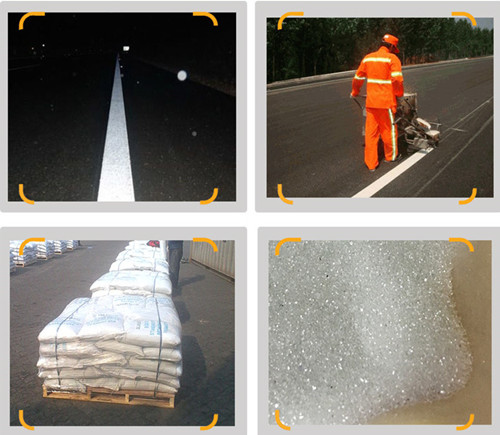Benefiting from ABB's energy-saving technology, the winter heating of 50,000 Shangri-La residents will shift from firewood and stoves to centralized heating. This will greatly improve the energy efficiency of the region while improving the living standards of the residents. Each year, Shangri-La will save 17,000 tons of coal, which is equivalent to reducing 105,000 tons of carbon dioxide emissions. At the same time, it will reduce 460 tons of soot emissions and save 220,000 cubic meters of wood.
Shangri-La, China, June 18, 2014 – ABB, the world's leading power and automation technology group, will provide centralized heating systems to Yunnan Diqing Tibetan Autonomous Prefecture Development and Investment Group Thermal Development Co., Ltd. (DHDC) for urban concentration in Shangri-La County Heating project. This system is expected to be commissioned in the third quarter of 2015.
Shangri-La County is located in the northwestern part of Yunnan Province, which is more than 3,300 meters above sea level. It is located in the heart of the “Three Parallel Rivers†World Natural Heritage Site and has been hailed as “a paradise on earth†by the world. However, the local 50,000 residents have relied on stoves that use wood as their main fuel to heat in the winter, which not only pollutes the air, but also causes major damage to the local ecological environment.
This unsustainable heating method will be completely changed with the implementation of the first phase of the Shangri-La Urban Central Heating Project. The five sub-districts of the county will shift from inefficient stoves to unified central heating, which will greatly reduce air pollution and effectively protect the local ecological environment. Part of the funding for these five district central heating projects comes from the Danish government-led DANIDA hybrid credit program.
ABB's head of Denmark, Klauz Madsen, said: "Denmark has a unique advantage in the field of efficient and environmentally friendly central heating. The project also confirms this. It is well known that central heating technology utilizes the waste heat generated by power generation. Reduce carbon dioxide emissions."
ABB will provide residents with the necessary heat from the steam-water heat exchanger in the boiler room to the electromechanical equipment installed at the end user. ABB's automation and electrical solutions will connect and monitor new heating stations to maximize productivity, which will help provide a safe and reliable heat source for approximately 50,000 residents. In addition, ABB will provide an air source heat pump to help the heating mode change from a separate household heating boiler and coal stove to an electricity-based boiler. At the same time, the use of heat pumps will increase the energy efficiency of the system and help local residents improve their quality of life by reducing coal emissions.
During the winter, Shangri-La temperature changes greatly in the morning and evening, and the temperature difference will drop from 1 degree Celsius in the day to minus 27 degrees Celsius in the night. To ensure that the heating needs of the residents are fully met, the site's five data acquisition and monitoring (SCADA) systems will be connected to the central control and monitoring system for the most efficient heating.
The transition from stove heating to central heating will bring huge environmental benefits to Shangri-La. Each year, Shangri-La will save 17,000 tons of coal, which is equivalent to about 105,000 tons of carbon dioxide emissions per year; in addition, it will reduce 460 tons of soot emissions, save 220,000 cubic meters of wood, and transport 1.8 million kilometers. The energy consumed by wood (equivalent to 38 million kWh).
Denmark has the world's leading central heating system and technology, which brings an average of $855 million in exports per year to the country, which is expected to grow threefold in 2020. ABB Denmark is the center of ABB's global central heating business, which will be completed by ABB Denmark and ABB China.
ABB is a Fortune 500 company and a leader in power and automation technology. ABB is committed to helping its power, industrial, transportation and infrastructure customers improve their performance while reducing their environmental impact. ABB Group has operations in more than 100 countries and employs 150,000 people. ABB has a full range of business activities in R&D, manufacturing, sales and engineering services in China, with 19,000 employees, 37 local companies and sales and service networks in 109 cities across the country.
Drop-on Glass Beads, during the process of road work, drop glass bead onto the road line painted with thermoplastic paint which is heated to certain temperature while the paint is still wet, thus to increase the reflectivity of road marking.
How Glass Beads are Applied to Pavement Marking Materials:
The glass beads are applied to pavement marking materials. They can be premixed in marking materials before application, or they can be dropped or sprayed into the wet paint directly behind the paint sprayer, or a portion can be dropped onto premixed two-part epoxy or thermoplastic materials.
The top surface of beads is enveloped by the paint, with the wicking action of the paint rising up to above the midpoint of the bead. This provides two actions. It locks the glass beads into the paint and allows the paint to act as a diffuse reflecting surface for retroreflection, with the paint color affecting the color of the retroreflected light. The light entering the glass bead is bent and focused towards the back of the bead and reflected back out towards the headlights and driver.

Drop-on Glass Beads
Thermoplastic Paint Drop-On Glass Beads,Traffic Paint Drop-on Glass Beads, Road Marking Drop-on Glass Beads, Reflective Drop-on Glass Beads
YONGQING BAILUYUAN GLASS PRODUCTS CO.,LTD , https://www.blyglassbeads.com
